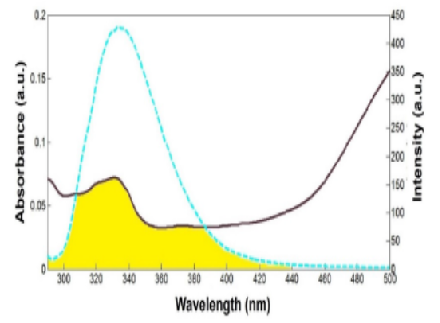


Indian Journal of Science and Technology
Year: 2024, Volume: 17, Issue: 3, Pages: 286-300
Original Article
S Gayathri1, S Bakkialakshmi2*
1Research scholar, Department of Physics, Annamalai University, Tamil Nadu, India
2Professor, Department of Physics, Annamalai University, Tamil Nadu, India
*Corresponding Author
Email: [email protected]
Received Date:29 September 2023, Accepted Date:20 December 2023, Published Date:20 January 2024
Objectives: This study explored the interaction mechanism between the synthetic azo dye amaranth (AMA) and the widely consumed whey protein beta-lactoglobulin (BLG), using multi-spectroscopic techniques combined with a molecular docking study. Neurodegenerative diseases are often marked by protein aggregation; hence, this study examined the effect of AMA-induced aggregation on BLG at low pH. Methods: The interaction mechanism was investigated at physiological pH using UV–Vis absorption, steady-state and time-resolved fluorescence, Fourier transform infrared (FTIR) spectroscopy, Forster's theory of non-radiation energy transfer, and molecular docking techniques. Biophysical studies, such as turbidity, circular dichroism spectra, and FESEM analysis, have been used to characterize AMA-induced aggregation in BLG. Findings: Steady-state fluorescence quenching of BLG by AMA revealed that the quenching process was dominantly static, owing to complex formation. This was confirmed using time-resolved fluorescence data. BLG showed one binding site for the AMA dye, with a binding affinity of 105 mol/L. According to the FRET analysis, the estimated distance between the binding of BLG and AMA was 3.24 nm. Conformational changes in the BLG were revealed through synchronous fluorescence and FTIR spectroscopy as a result of AMA interaction. Molecular docking studies have suggested that AMA predominantly binds to BLG via hydrogen and hydrophobic bonds. The results of the turbidity experiments showed that AMA concentration affected BLG aggregation. Changes in BLG secondary structure were detected by circular dichroism spectra. FESEM measurements confirmed the amyloid-like structure of the aggregated BLG. Novelty: The experimental results of turbidity analysis revealed that even at low concentrations (0.8 mM) and room temperature, the interaction between the azo dye AMA and BLG can cause protein misfolding, leading to the formation of amyloid aggregates. This research aims to study the harmful effects of edible azo dyes and their ability to initiate the formation of amyloid aggregates linked to various neurodegenerative disorders.
Keywords: Amaranth, Betalactoglobulin, Fluorescence quenching, Docking, Amyloid aggregation
© 2024 Gayathri & Bakkialakshmi. This is an open-access article distributed under the terms of the Creative Commons Attribution License, which permits unrestricted use, distribution, and reproduction in any medium, provided the original author and source are credited. Published By Indian Society for Education and Environment (iSee)
Subscribe now for latest articles and news.